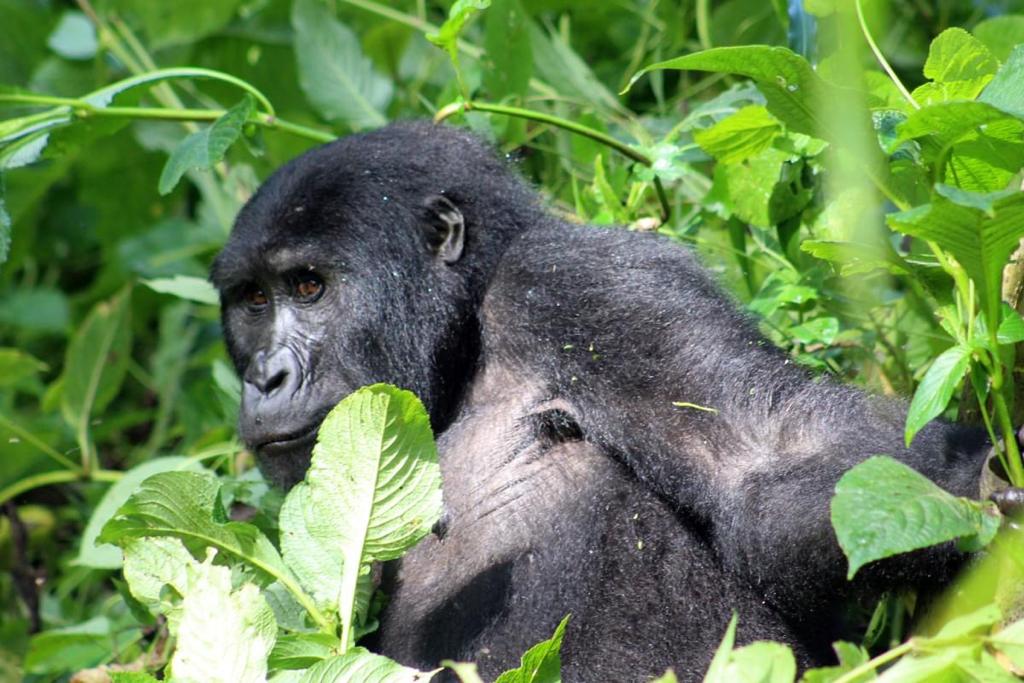Tips for a Successful Gorilla Trek: Gorilla trekking offers an incredible opportunity to observe mountain gorillas in their natural habitat within the rainforests of Uganda, Rwanda, and the Democratic Republic of Congo. To ensure a memorable and successful trek, careful planning and preparation are essential. Here are some key tips to enhance your experience, from booking permits to navigating forest trails.
Follow the Rules
Adhere to the guidelines provided during the pre-trek briefing for your safety and the gorillas’ well-being:
Keep a Safe Distance: To reduce the chance of disease transmission, stay at least 8 meters away from the gorillas.
Steer Clear of Loud Noises: To prevent startling the gorillas and inciting their agitation or aggression, speak quietly.
No Flash Photography: To avoid upsetting or agitating the gorillas, turn off your camera’s flash.
Stay Calm and Composed
Gorillas are generally gentle but can become unpredictable when they feel threatened.
Remain Still: Avoid making sudden movements that could be perceived as a threat.
Follow the Guide’s Instructions: Trust your guide’s knowledge and follow their instructions during close encounters.
Hire a Porter
Hiring a porter for a gorilla trek can enhance your experience in many ways:
Carrying Heavy Gear: Porters can help you carry your luggage, snacks, cameras, and other heavy gear.
Navigating Challenging Terrain: Porters are experienced and knowledgeable about the terrain and can help you cross tricky parts of the trails.
Supporting Conservation: Many porters and park guides are former poachers, and the income from being a porter can dissuade them from poaching. Hiring a porter supports local communities, providing valuable income to families near the gorilla parks.
Mental and Physical Support: Porters can boost your morale and help you maintain an ideal pace.
Cultural Insights: Porters can offer information on the culture of the region.
Assistance for the Elderly or Disabled: Porters can carry you to and from the jungle and to the gorillas, and can assist disabled tourists.
Be Prepared for Any Weather
The weather in rainforests can be unpredictable.
Prepare for Rain: Pack waterproof clothing and hiking boots with good grip.
Pack Extra Layers: Accommodate fluctuating temperatures.
Book Your Gorilla Trekking Permit
Gorilla trekking requires a permit, which should be booked well in advance due to limited availability:
The cost of gorilla trekking varies by country: $800 in Uganda, $1500 in Rwanda, and $400 in the DR Congo.
Gorilla permits, which grant access to the gorillas, sell out quickly during peak seasons (June to September and December to February), so secure your permit early.
Note that permit costs are just a part of the overall trekking expense, which also includes transportation, accommodation, food, visas, air tickets, packing essentials, porters, and tips for guides.
Choose the Best Time for Trekking
The timing of your trek impacts your experience:
Uganda and Rwanda: The best time to trek is during the dry seasons, from December to February and June to September. During these months, the trails are less slippery and easier to use. However, permits and accommodation can sell out months in advance, so you may need to book at least a year in advance.
DR Congo: The best time to trek is during the “low rainfall” season from June to September, and the “gentle rainfall” season from December to February. The least wet and coolest time of year is July to August.
Seasonality: The rainy season in Uganda, Rwanda, and the DRC is March, April, and May. During the rainy season, the trails are slippery and muddy, making it harder to trek. However, there are fewer visitors and crowds, and some accommodations offer discounts in low season.
Regardless of the season, ensure you have the right gear, are physically fit, and are prepared for the conditions.
Prepare Physically for the Trek
Gorilla trekking can be strenuous:
Start Training Early: Engage in physical activities like hiking or jogging to build stamina and strength before your trek.
Stay Hydrated and Well-Nourished: Bring sufficient water and snacks to maintain energy levels during the hike.
Pack Smart for the Trek
A well-packed backpack is crucial for a comfortable trek:
Hiking Boots: Sturdy, waterproof boots that support your ankles and protect your feet from sharp objects and rain.
Gardening Gloves: Protect your hands from injury when you grab branches for support.
Rain Jacket or Poncho: Rain can fall at any time, even during the dry season, so it’s important to be prepared.
Long-Sleeved Shirts and Long Trousers: These will protect you from insects and scratches.
Water and Snacks: Stay hydrated and energized.
Camera with Extra Batteries: Capture unforgettable moments, but disable the flash.
Insect Repellent and Sunscreen: Protect yourself from insects and sun exposure.
Malaria Prevention Medication: Some travelers prefer to take anti-malaria drugs.
Walking Stick: Often provided at the park, it helps navigate steep or slippery sections of the trail.
Conclusion
Gorilla trekking is a one-of-a-kind adventure that requires careful planning and respect for nature and wildlife. By following these guidelines, you can have a safe, enjoyable, and memorable experience in the heart of the African rainforest. Book a safari with Ubuntu Voyages for an unforgettable experience.





